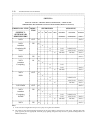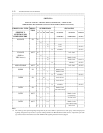TRUNKING TERMS AND CAPABILITIES C-15
_ ______________________________________________________________________________________
_ ______________________________________________________________________________________
_ ______________________________________________________________________________________
Note: Previously, most switch implementations of the universal trunk type have not actually timed for a
precise wink signal. However, they do provide dial-tone detection for subnet trunk groups.
With System 85 (R2V4) and Generic 2, E&M trunk types 41, 43, 46, and 47 will provide a ‘‘true’’ wink-
start and ‘‘true’’ delay-dial signal. Trunk types providing the‘‘true’’ wink-start and ‘‘true’’ delay-dial signal
provide improved operation. Recall that System 85 (R2V4) and Generic 2 provide the capability to
administer a different signaling type from that implied by the trunk type. If for these trunk types (41, 43,
46, and 47) the signaling is administered to a type other than the default value, then universal signaling
does not apply.
WATS (Wide Area Telephone Service) Trunk
A LEC or AT&T offering that provides bulk cal billing rather than individual call billing.
Wink-Start Incoming
The trunk signaling method that consists of a momentary ‘‘WINK’’ off-hook signal (on-hook to off-hook to
on-hook). The off-hook part of the signal consists of operating the M-lead for a time duration ranging from
140 ms (minimum) to 290 ms (maximum). Electromechanical switches typically generate a 200 ms-wink
while electronic switches typically generate a 150-ms wink. This ‘‘WINK’’ signal indicates, to the
distant originating switch, that the local switch is ready to receive dialed digits. The signal is transmitted
about 100 ms after receipt of the initial seizure.
Note: Some trunk types allow giving dial tone in addition to sending the wink-start signal.
Wink-Start Outgoing
The originating switch goes off-hook on the M lead to seize the trunk, then listens on the E-lead for a
ground response. Upon detecting a ground on the E-lead (a successful wink-start signal), the local switch
transmits the address digits. A ‘‘no response’’ on the E-lead indicates a signaling failure.


















